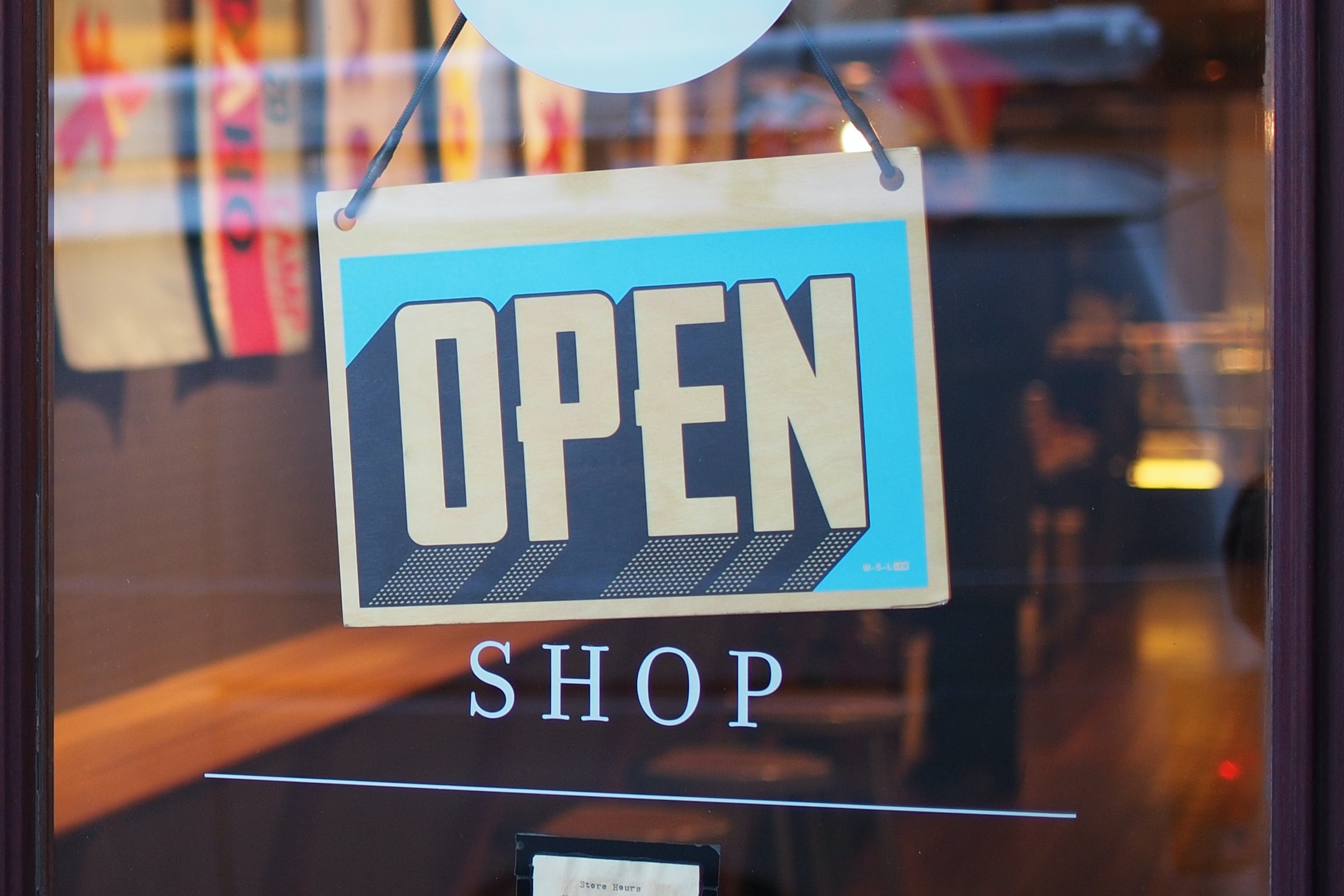

Aug 09, 2022
2020 saw a huge shift in retail. As shop doors were forced to close due to Covid, the long promised e-commerce revolution finally delivered. Had lockdowns and restrictions lasted 8 weeks instead of 18 months then some of the new behaviours associated with online might not have stuck. But two years on and consumers have become accustomed to digital first across all retail categories.
According to data from IBM, the pandemic accelerated the shift to e-commerce by about five years. In 2019 online purchases represented just under 14% of all retail sales. In 2021 that figure jumped to just under 20%. That’s almost a 50% increase in just a couple of years. The global e-commerce market is expected to total $5.55 trillion in 2022.
Retailers are having to rapidly pivot to meet the evolving needs of a growing market where consumers expect a seamless online experience, no matter the retailer.

Jacqui Woolley, Marie Curie Retail Director
But, this doesn’t mean physical retail is dead. It’s just evolving. As we’ve unlocked from the pandemic, charity shops have seen a surge in interest and sales, with some reporting sales up by as much as 22%.
Partly driven by the cost of living crisis and a backlash against fast fashion, thrifting has fuelled a lot of the latest ‘ketamine chic’ fashion trend. Just search for ‘charity shop haul UK’ on TikTok and you’ll discover a stream with over 167 million views, with content creators promoting their favourite charity retail locations and brands to their millions of followers.
This week we’re going to take a peek into the shop window and look at some of the trends driving changing consumer expectations - from embedded sustainability to unexpected collaborations.
Whether your charity has bricks and mortar stores or an online shop, retail can offer a new way to engage loyal supporters, create community, build brand elasticity and generate funds. Welcome to the retail revolution.

2022 has seen increasing concern and pushback against fast fashion. Love Island dropped fast fashion retailer Misguided in favour of eBay for their 2022 brand partnership. Whilst Chinese e-commerce giant Shein (which drops up to 1,000 new items and looks every day and was recently valued at over $100 billion) has experienced backlash from its heartland audience on TikTok.
The move towards circularity has seen a rise in thrifting and charity retail, along with new movements to repair and reuse in the home as well. A 2022 Deloitte report stated that 53% of UK adults have repaired or fixed an item, rather than purchasing a brand new one. Whilst 40% have chosen brands that have environmentally sustainable practices or credentials.
We’ve become more socially conscious around our purchases, reducing the number of new clothing items we buy, fixing items, buying second hand/refurbished, and choosing brands based on their sustainability and ethical practices.
The Yeezy Foam Runner shoes were one of the most popular trainers of 2021, with the initial launch selling out in seconds. What’s interesting about these clogs is that they’re made from algae foam, which is a renewable resource that is being sustained in man-made farms. These sought after sneakers now resell for up for 5 times their original retail price.
From sustainable packaging to reducing your carbon footprint, consumers now expect sustainability credentials from their brands. However sustainability is competing against two big challenges: the dopamine rush of immediate gratification/fast fashion; and the increased price tag that comes with sustainability.
Consumers may want to make the sustainable purchase but they’re trapped in the socioeconomic unfairness that was so perfectly articulated by Terry Pratchett in his 1993 Men at Arms Discworld novel. (If you’re not familiar with the Samuel Vimes boots theory and how it’s being used now to track the cost of living crisis, take a read here).

As the technology behind e-commerce has evolved, it’s become easier for everyone to become a retailer. Platforms like Shopify offer an all-in e-commerce solution for both new and established retailers. From Whole Foods and Heinz, to Tesla and Netflix. All household brands who use the Shopify platform to sell their products and merchandise.
Whilst new kid on the block TikTok launched TikTok Shop in 2021, a full service commerce platform that also integrates with other e-commerce platforms (like Shopify).
TikTok Shop offers creators a way to monetise their channel either through the sale of their own products and merchandise or affiliate marketing; and for brands delivers a new channel to engage and sell directly to audiences. According to Marketing Week 2022, 79% of UK TikTok users discovered new brands through TikTok, and 54% have purchased a brand after seeing it on TikTok.

The next big frontier for retail is the move to virtual. Retail and shopping experiences delivered using augmented reality (as Snap demonstrated at the Future of Funding safari) or experienced in the metaverse.
Nike and Gucci have launched fashion shows inside the multiplayer game Roblox. Adidas has launched an NFT collection with the Bored Ape Yacht Club and launched interactive experiences on South Korean social avatar app Zepeto. Balenciaga started selling apparel in Fortnite. Beauty brands like Charlotte Tilbury have built virtual stores in their online store.
“One of the biggest trends is really just consumers being willing to spend money for virtual goods,” says Corey Svensson, who runs Crypto and Blockchain at Shopify. Corey feels that the pandemic stimulated consumer interest in the metaverse, explaining, “It’s part of the greater curve of adoption that’s just going to naturally happen.”
However these purchases aren’t limited to digital experiences - they’re phygital (physical and digital). The Adidas NFTs came with real world items that the purchasers could use and wear, along with their digital assets. Whilst other brands, like The Hundreds, are using NFTs as a way to build community around their product. The Hundred’s NFT drop acted like a membership program, giving holders access to physical merchandise drops and other ‘member’ benefits.

Finally we’re shining a spotlight on the next generation of brand collabs. The past 12 months has seen a wave of unexpected collaborations hit the high street, and the runway. Breaking brand expectations to reach new audiences and consumers.
From the Simpsons walking the catwalk for Balenciaga’s Spring/Summer 2022 launch, to trainspotting icon Francis Bourgeois becoming the face of the Gucci / North Face collab. However our favourite collab of 2022 goes to Greggs / Primark who have launched a second batch of pastry-inspired clothing, dropping 5th August. (Expect it to sell out in hours).
Just because you don’t have bricks and mortar stores, doesn’t mean that you should ignore retail. Leverage your channels to connect with passionate supporters looking for new ways to support your cause. From merchandise drops to unexpected collaborations, retail is a way for supporters to shout about your cause and channel their self-expression.
Go beyond the obvious to explore the potential of unexpected collaborations. Challenge your brand elasticity. Be provocative. Want to reach a new audience? Who can you partner with who already understands and speaks to these groups?
Are you maximising the potential of all your channels? When was the last time your shop page saw a refresh? Do you have an online shop? Are customers coming to your store because of the brand or the product, and how can you convert them further?
Sustainability credentials are now hygiene, not nice to have. Transparency is key. How are you measuring and shouting about your sustainability credentials, and where can you challenge or improve your supply chain? What skills and knowledge do you have to rate other brand’s impact?